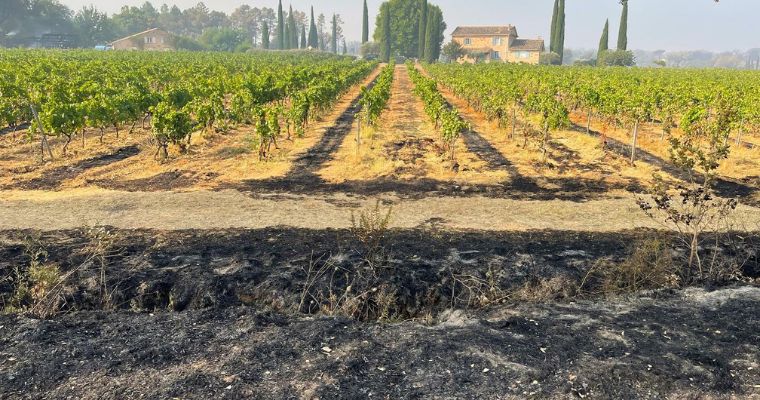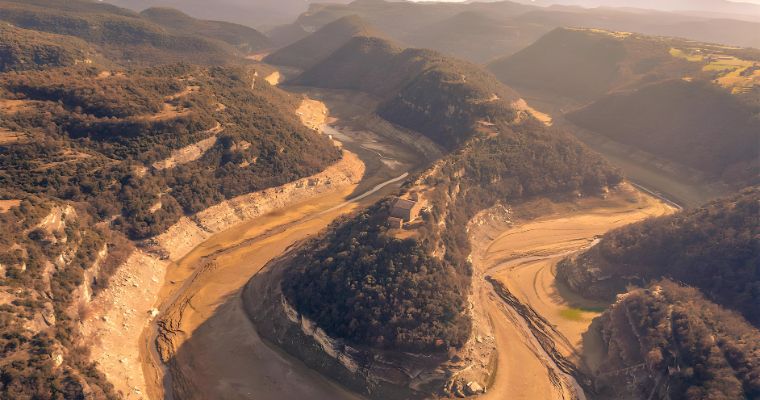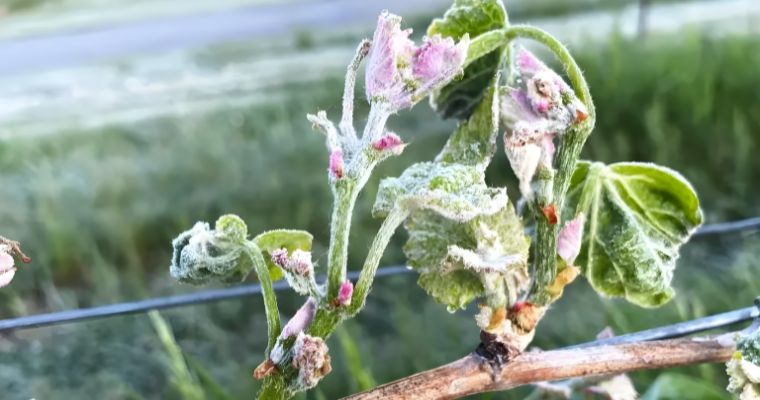Special Price Ends
March 15, 2024
Judging
Date
May 21, 2024
Winners Announcement
June 20, 2024

Each year getting harsher than before raises a concern for everyone in and outside the industry. Not too long ago, climate change's connection to wine was a lower priority for many vignerons. Early Industrial conferences had tense viticultural experts addressing rooms of growers and winemakers with reactions ranging from mild concern to outright disbelief.
Which isn’t the same anymore, The Data surrounding Global change is indisputable. Reports from NASA and the National Oceanic and Atmospheric Administration show a world that is already more than 1°C (1.8°F) warmer than before the Industrial Revolution. NASA recorded in their global report that “The global average surface temperature rose 0.6 to 1.0 degrees Celsius (1.1 to 1.8° F) between 1906 and 2023, and the rate of temperature increase has nearly doubled in the last 50 years. Temperatures are certain to go up further”.

Mirabeau vineyards affected by wildfire sweeping 7000 hectares of land and protected forest in France
In the last two years, there have been temperature records from Canada to wildfires in Australia, Portugal, Greece, and California, with floods in Australia and Germany. Compared to European wine nations, Italy suffered a January through April of 2023 bringing the driest start to a year on the Iberian peninsula since the 1960s, and Wine producers across the country fought to save the vintage. Catalonia and Andalusia were hit just hard by this, and the impact of climate change on wine production is becoming even more obvious.

The Monastery of Sant Pere de Casserres in Catalonia sits perched above the Sau reservoir, which is now nearly dry. (Artur Debat/Getty Images)
Regions like Catalonia's Penedès, a leading source of Cava had a discrete impact peculiarly with compounded droughts. Leading some vineyards to lose up to 70% of their yield.
A small generational long winery named Pequeños y Salvajes in La Sierra de Gredos high in the mountain regions two hours away from Madrid, where pruning the vines to bottling and marketing is done by themselves had brought both drought and hail upon their cultivation.
“In 2019, we would harvest at the end of August or the beginning of September, but this year we started our harvest at the end of July,” said Victoria Sánchez, owner of Pequeños y Salvajes winery. “Climate change has made a big difference for us. Three months before the harvest, we had a hailstorm on one of our plots which is 500 meters higher than our other vineyards. We lost 30 percent of our grapes from that plot.”
“I think the problems are coming now, in the new year. We will see if some of our vines are dry or dead or if they can continue living. We harvested 25 percent less this year because of the drought. It was horrible.”
Vines are one of the most sensitive crops, and their characteristic to reflect vintage variation comes from the function of their surroundings. The fruit notes in red wine that taste very ripe or even jammy likely come from a warm climate whereas If it tastes tart or delicate like freshly picked berries, the wine possibly came from a cooler climate which explains why wine is particularly vulnerable to climate change.
Dr. Richard Smart, Australian Smart Viticulture shared in reports “The grape and wine industry is the canary in the coal mine for agriculture”. Even a moderately small temperature change (much less than the 3⁰C that the climate scientists warn us about) will definitely rewrite regional reputations and varietal preferences.
Climate change first & foremost impact signifies itself on temperature making it warmer, resulting in the cycle responding earlier than normal. Budding, flowering, fruit-set, veraison, and harvest are all taking place, on an average ten days to two weeks sooner than they used to. This leads to alcohol levels being higher than usual, acidity levels lower, and tannins frequently scratchier and less evolved. Engaging the challenging warm temperatures is obvious in climate change for vintners, which gets more onerous in winter.

Frost damage in vineyards linked to climate change | Image source: Unsplash
The environmental shifts are significantly leading to early budding in crops. This increases the risk of frost damage, with no immediate effect frost damage appears noticeable during clear days. Frost at this time can kill the foliage right back to the cordon or partially kill the shoots and inflorescences, resulting in significant crop losses, while summer heatwaves make the grapes hibernate instead of ripening evenly. Equally, the unbalanced harvests start earlier year upon year, which causes the chemical formatting of the grapes to become skeptical to the point where their aromatics and intricacies are greatly reduced.
Continuous brutal impact on traditional wine regions, affecting grape ripening, vineyard management, and overall wine production. As adaption is still a question for winemakers who seek grade cultivation & maintenance as they persistently try to offer the finest in the industry.

Image source: Unsplash
Climate change certainly had a huge impact on the global wine industry. Using technology and new studies winemakers are carrying measures to improve the yield and adapt with a response to tackle these misfortunes.
Winemakers are implementing various actions to adapt to climate change, such as experimenting with new grape varieties that thrive in warmer conditions, adjusting harvest times, and employing sustainable farming practices to reduce environmental impact. Some regions are exploring alternative areas with more drought-resistant vineyards that can maintain grapes’ quality to mitigate the impact of shifting climate patterns on traditional wine-producing regions.
Additionally, the Vineyard location shifts to cooler regions, precision agriculture techniques, and investments in renewable energy which contributes to sustainability are some steps to ease out the impact. The upcoming trend of collaboration among winemakers, scientists, and policymakers is crucial for developing comprehensive strategies to address the evolving climate challenges faced by the wine industry.
Specifically, Wineries are also focusing on water conservation measures, implementing efficient irrigation systems, and adopting organic farming practices to reduce environmental impact. Education and awareness campaigns within the industry and among consumers further promote sustainable choices and highlight the importance of supporting climate-conscious winemaking. These ways will ensure to lower the harshness of climate change but none of them are easy to follow and will take plenty of time to make a difference yet adapting to never-before-seen climactic conditions is the only way to thrive in the spectacular wine industry.
[[relatedPurchasesItems-61]]
A unique opportunity to present your wines to America's top sommeliers. The wine scores are benchmarked for on-premise channels by top sommeliers, master sommeliers, wine directors and restaurant wine buyers. Enter Your Wines Before March 15, 2024, To Save.
